A collection of images depicting 16th century Irish people. Although the majority of figures illustrated are soldiers and warriors, there are also some fine pictures of women, especially by the Flemish artist, Lucas d’Heere.
‘Irish as they stand accoutred being at the service of the late King Henry’, by Lucas d’Heere, circa 1575. Born in Ghent, d’Heere was a celebrated 16th century artist who spent much of his career in England (after Théâtre de tous les peuples et nations de la terre avec leurs habits et ornemens divers, tant anciens que modernes, diligemment depeints au naturel par Luc Dheere peintre et sculpteur Gantois)
‘Irish man and Irish woman’ by Lucas d’Heere, circa 1575 (after Théâtre de tous les peuples et nations de la terre avec leurs habits et ornemens divers, tant anciens que modernes, diligemment depeints au naturel par Luc Dheere peintre et sculpteur Gantois)
‘Irish woman and girl’, by Lucas d’Heere, circa 1575 (after Théâtre de tous les peuples et nations de la terre avec leurs habits et ornemens divers, tant anciens que modernes, diligemment depeints au naturel par Luc Dheere peintre et sculpteur Gantois)
‘Irish men and women’, by Lucas d’Heere, circa 1575 (after Théâtre de tous les peuples et nations de la terre avec leurs habits et ornemens divers, tant anciens que modernes, diligemment depeints au naturel par Luc Dheere peintre et sculpteur Gantois)
An anonymous woodcut of Irish warriors, ‘DRAVN AFTER THE QVICKE’ (from life), dated to the reign of Henry VIII (now held in the Victoria and Albert Museum)
‘Thus go the soldiers in Ireland, beyond England, Thus go peasants in Ireland’, by Albrecht Durer, 1521 AD. Born in Germany, Durer is considered one of the greatest artist of the Northern Renaissance. In this image he shows a group of Irish soldiers, most likely mercenaries, who were fighting on the European continent during the early 1520s. It has been suggested that more heavily armed men represent gallowglasses, while the more lightly armed men are kerns (the original wood-cut is now held in the National Museums Berlin)
The chief of the Mac Sweynes seated at dinner and being entertained by a bard and a harper, by John Derricke, 1581 AD (after The Image of Irelande). John Derricke was an English official who accompanied Sir Henry Sidney on his campaigns against the Irish in the late 1570s. He subsequently published an illustrated book describing his experiences, which painted the Irish in a less than flattering light.
An armed company of the kern attack and burn a farmhouse, by John Derricke, 1581 AD (after The Image of Irelande)
A soldier holding a battle-axe hands a spear to an Irish chieftain, John Derricke, 1581 AD (after The Image of Irelande)
Depiction of an Irish woman from Christoph Weiditz’s Trachtenbuch (1530–40)
Irish horseman, from the Book of the de Burgos. This late 16th century document contains a genealogical history of the Burke family (after MS 1440, Historia et Genealogia Familiae de Burgo)
Irish warrior (Riocard mór mac Uilliam cungcur), from the late 16th century Book of the de Burgos, (MS 1440, Historia et Genealogia Familiae de Burgo)
Irish knight, from the late 16th century Book of the de Burgos, (MS 1440, Historia et Genealogia Familiae de Burgo)
Irish knight (Sor Uilliam/ William II), from the late 16th century Book of the de Burgos, (MS 1440, Historia et Genealogia Familiae de Burgo)
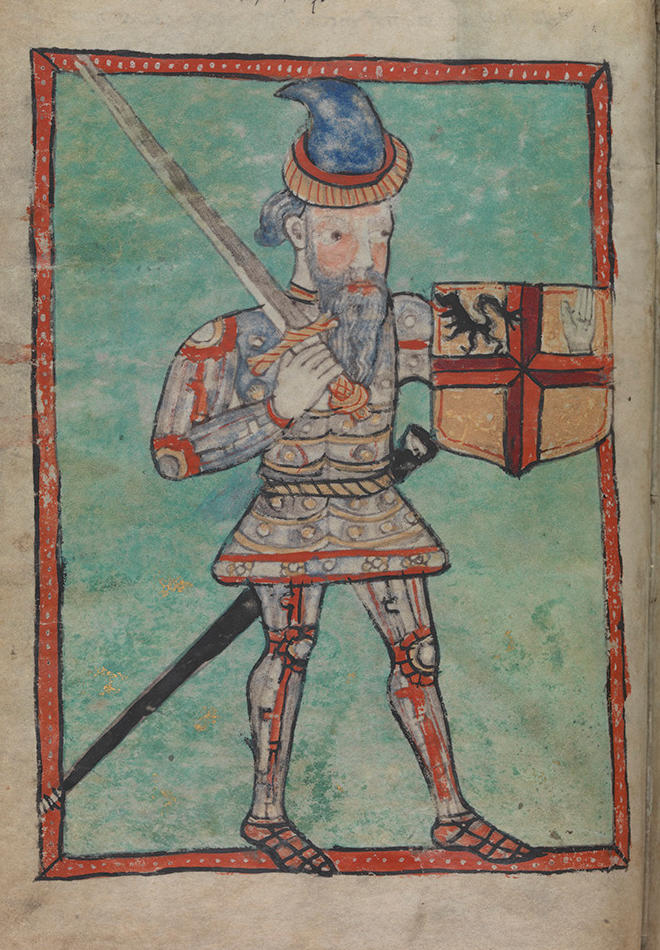 Irish knight (Emonn Albanach Mac Sir Uilliam), from the late 16th century Book of the de Burgos, (MS 1440, Historia et Genealogia Familiae de Burgo)
Irish knight (Emonn Albanach Mac Sir Uilliam), from the late 16th century Book of the de Burgos, (MS 1440, Historia et Genealogia Familiae de Burgo)
Irish knight (Tomás Mac Emoind), from the late 16th century Book of the de Burgos, (MS 1440, Historia et Genealogia Familiae de Burgo)
From the Códice De Trajes. This German text dates from c. 1547 and is now stored at the Biblioteca Nacional de España.
Irish man depicted in ‘Kostüme der Männer und Frauen in Augsburg und Nürnberg, Deutschland, Europa, Orient und Afrika – BSB Cod.icon. 341‘, circa AD 1500
Irish woman depicted in ‘Kostüme der Männer und Frauen in Augsburg und Nürnberg, Deutschland, Europa, Orient und Afrika – BSB Cod.icon. 341‘, circa AD 1500
Irish man depicted in ‘Kostüme der Männer und Frauen in Augsburg und Nürnberg, Deutschland, Europa, Orient und Afrika – BSB Cod.icon. 341‘, circa AD 1500
Gallowglass warriors of the Donegal Sweeney family depicted on Goghe’s map of Ireland from 1567
.


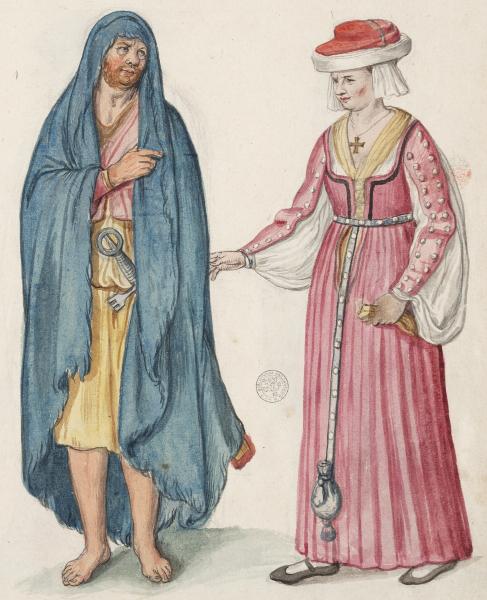
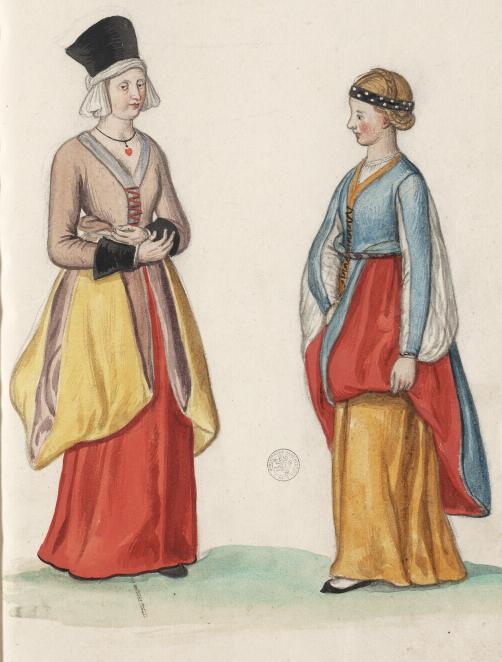

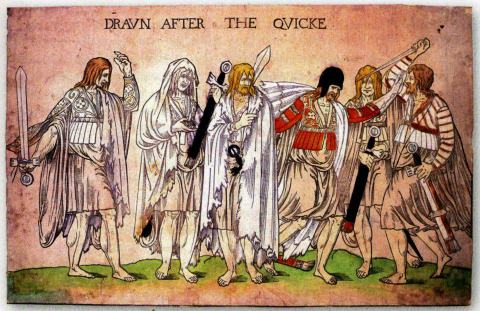
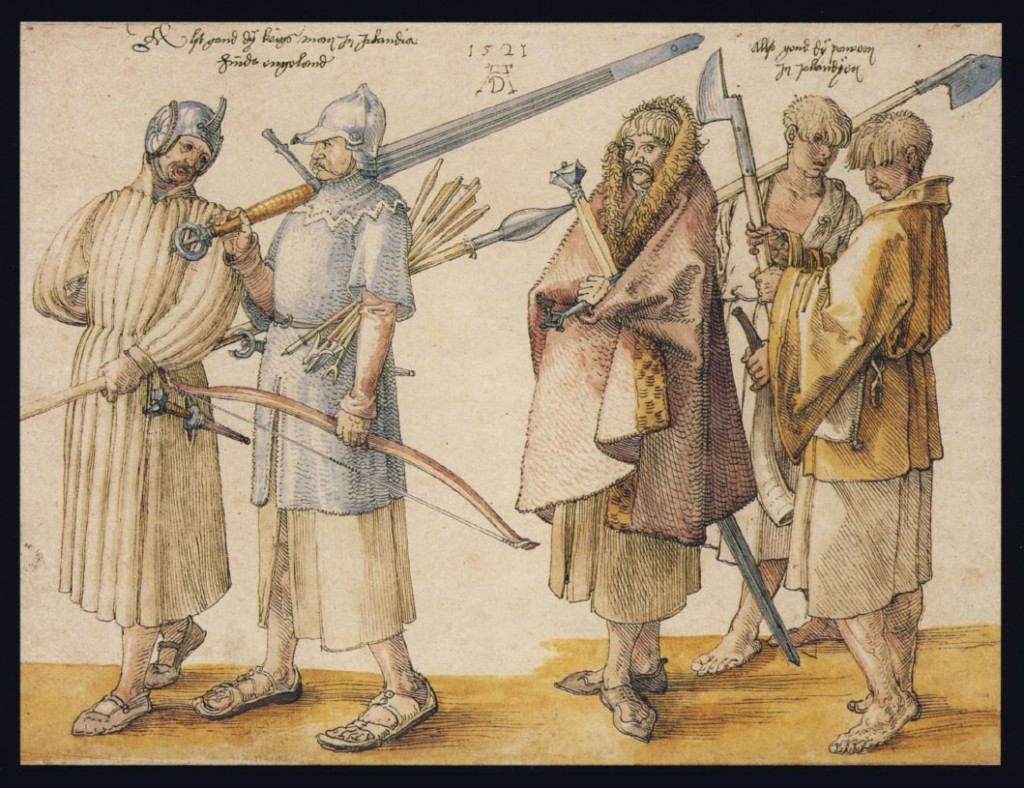

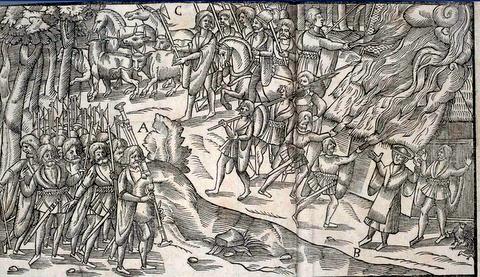
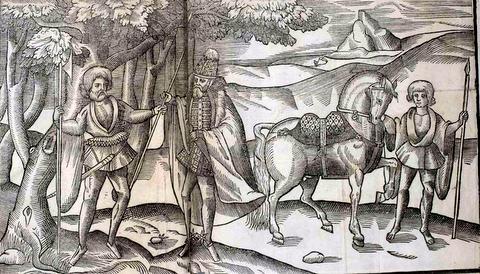
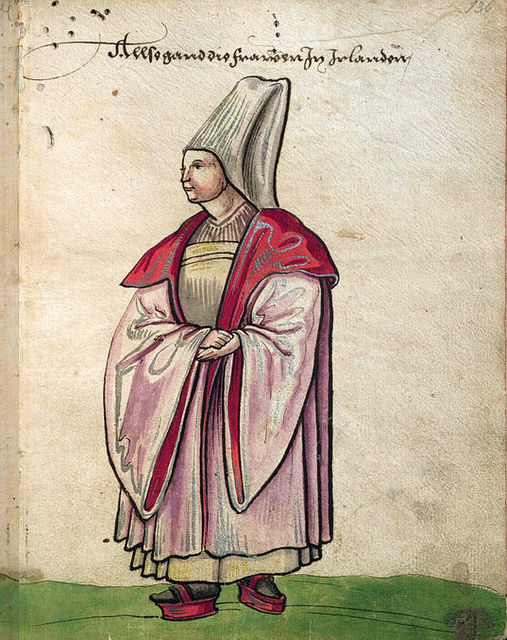

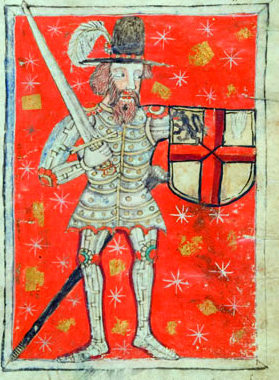

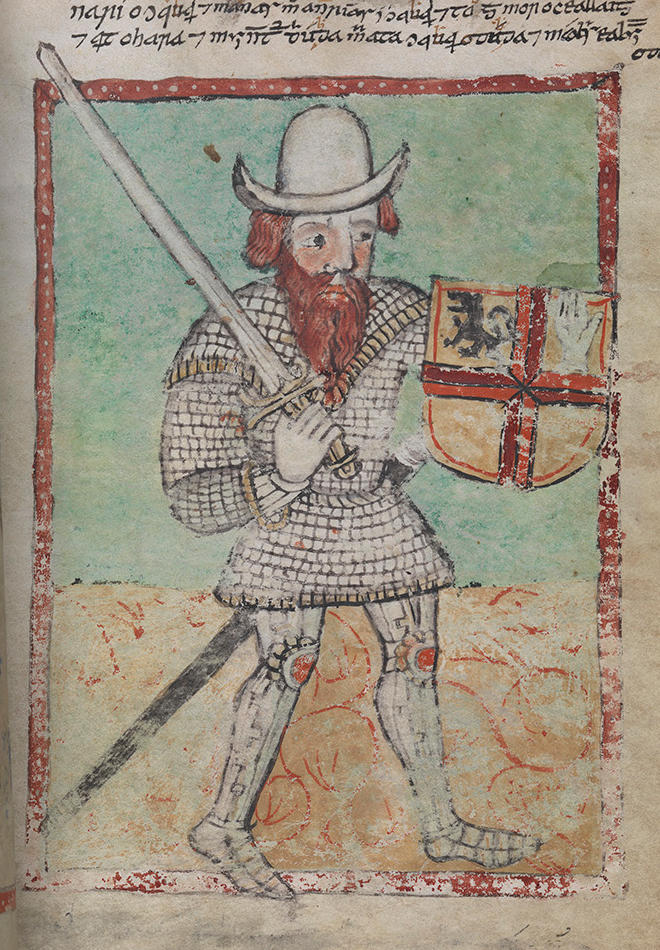
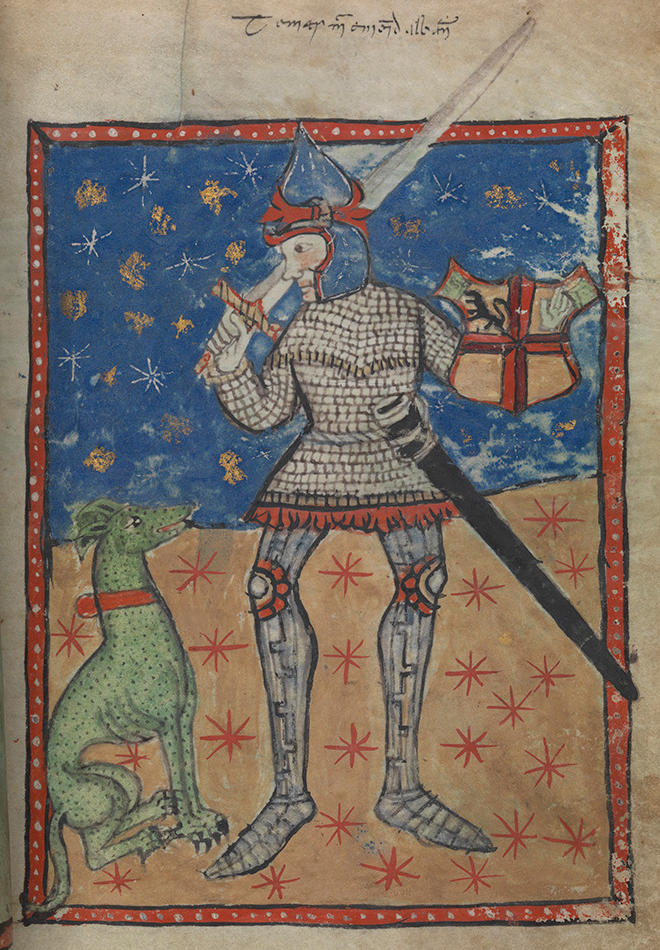
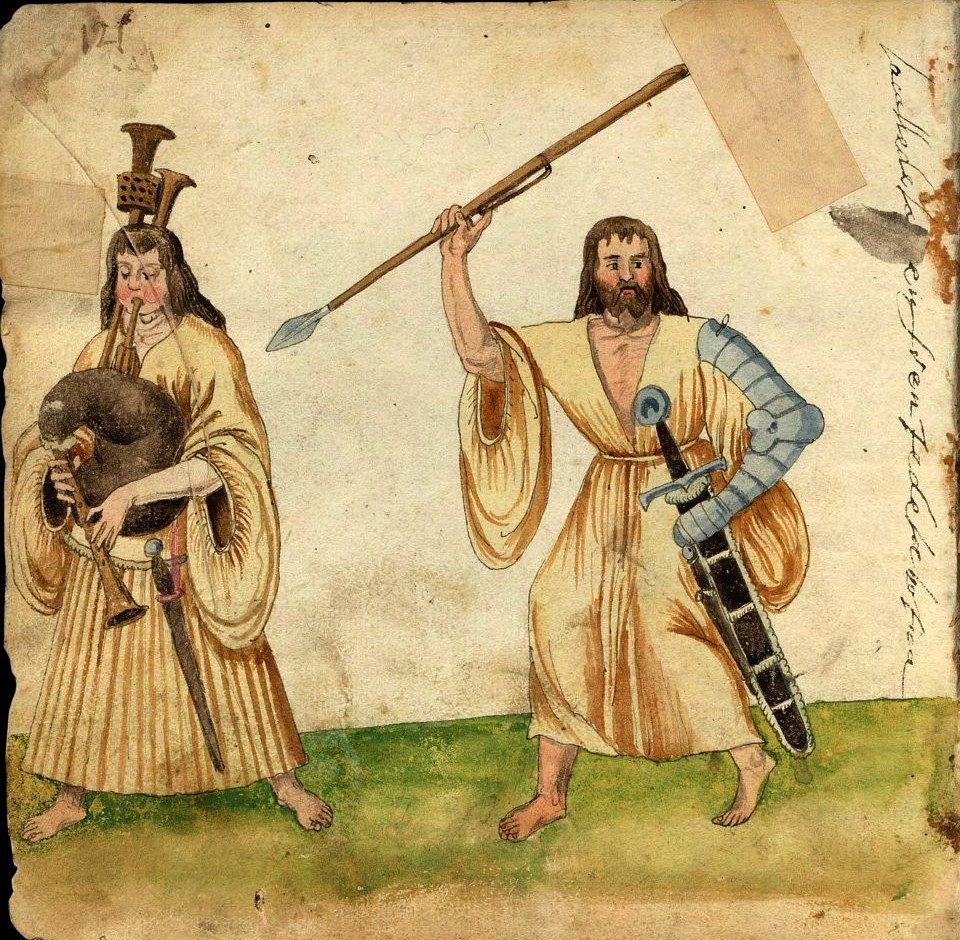
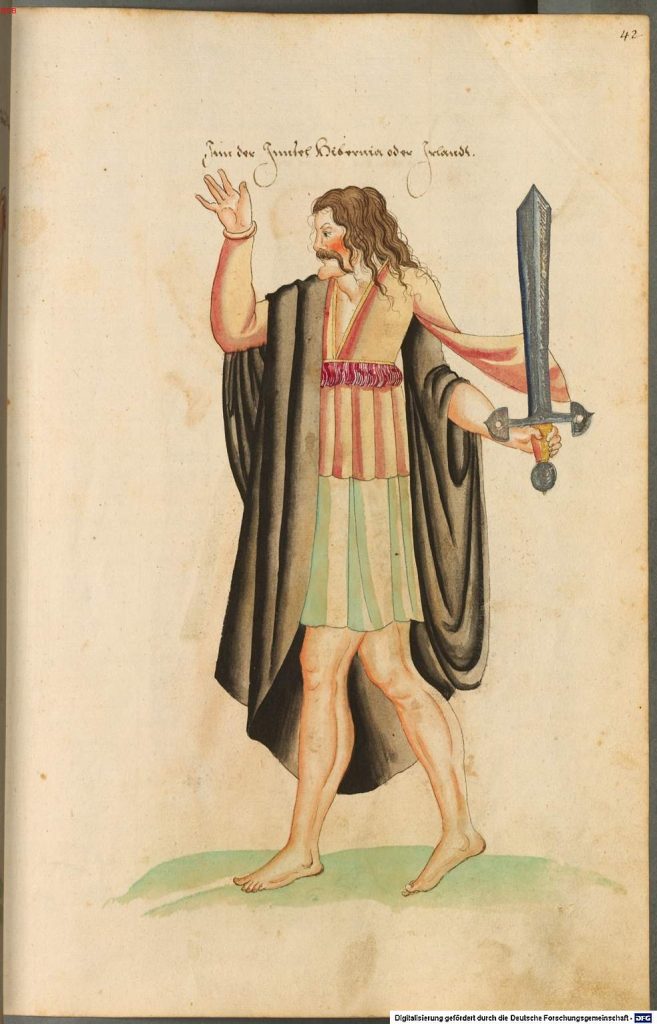
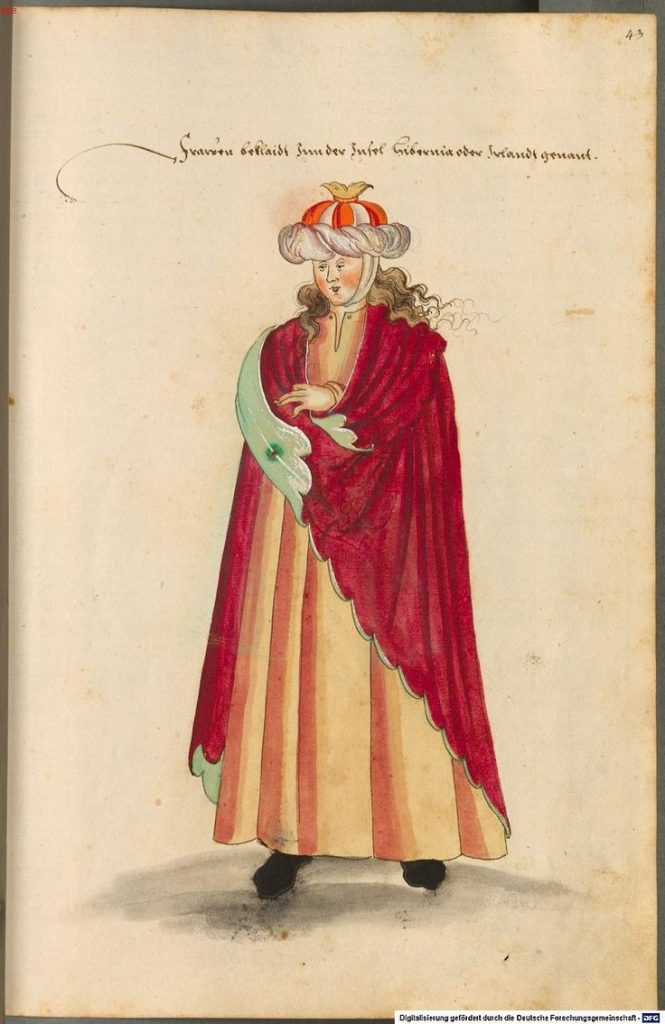
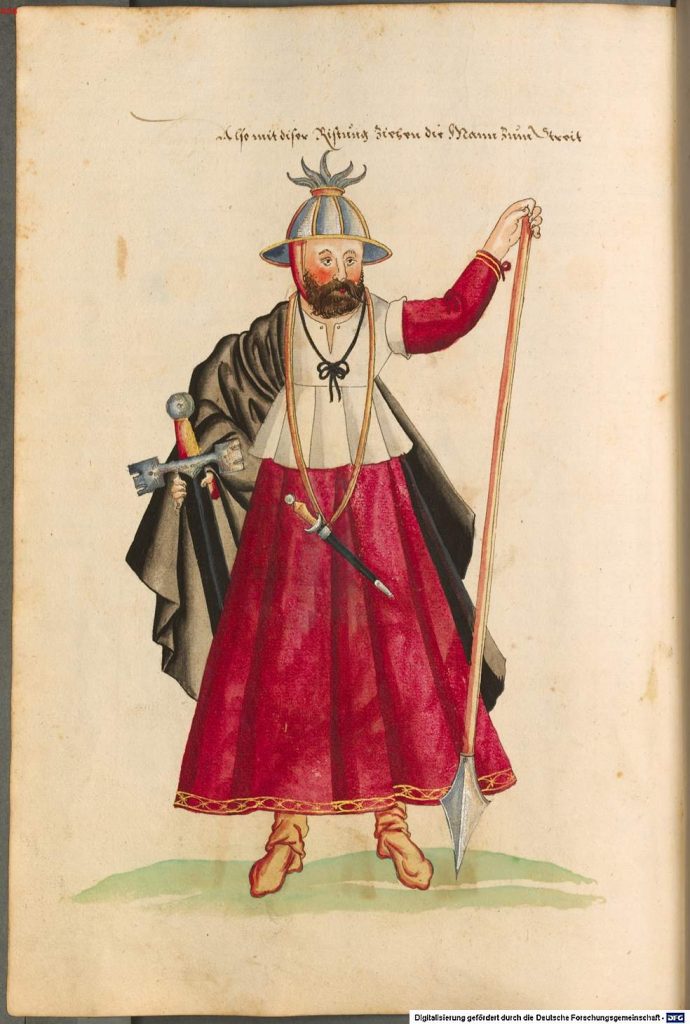



Thank you for sharing and learning a little bit of Irish history
Thanks for these collection of real imagery of irish people of the past.
thank you to view history
maith an fear.
Bhí sé seo mar an albam grianghrafanna ag mo mhamó!
Great post, I love getting to see the clothing that was worn. I especially enjoyed getting to see the fancy ladies dress.
looking at durers galloglass portraiture the question arises what is the symbolism of this picture painting and has anyone seen the hound head in the drawing
any explainations about the symbolism would be most welcome by return
Where is the hound head?
Nice overview.
Gaelicattire.com
We are doing a project on linen and it’s history in Ireland at our school Raheenwood Secondary and am delighted to see all those swathes of saffron linen despite Henry VIII’s efforts to stop Irish people using the dye and having g more than 5 ells of linen.
Depiction of an Irish woman from Christoph Weiditz’s Trachtenbuch (1530–40)
This picture is a tad confusing looking at the foot wear of this woman. It looks Oriental and given in a similar period they wore more inclosed shoe types…??
Weiditz’s image is not accurate at all as are a few other shown here. Weiditz shows shoes, outer dress and headress that is unaccounted for in 16th century Ireland. gaelicattire.com
Go raibh míle maith agat as an teachtaireacht seo. Thar a bheith suimiúil le héadaí traidisiúnta na hÉireann a fheiceáil.